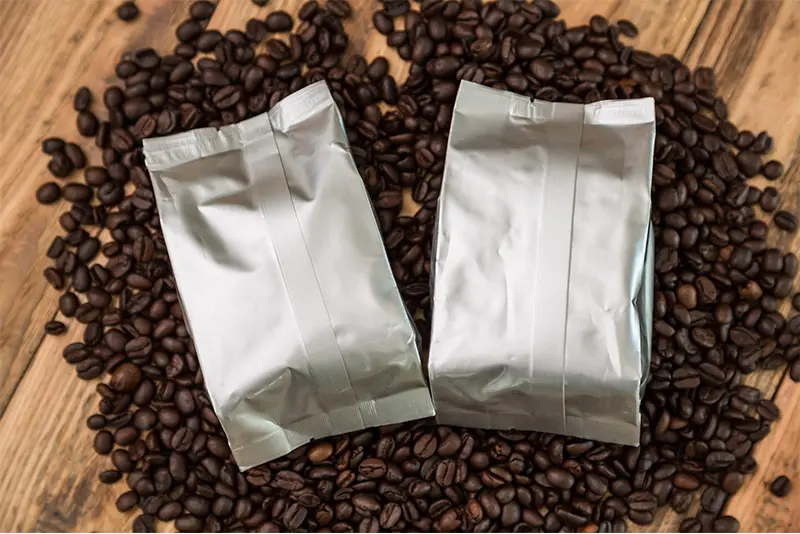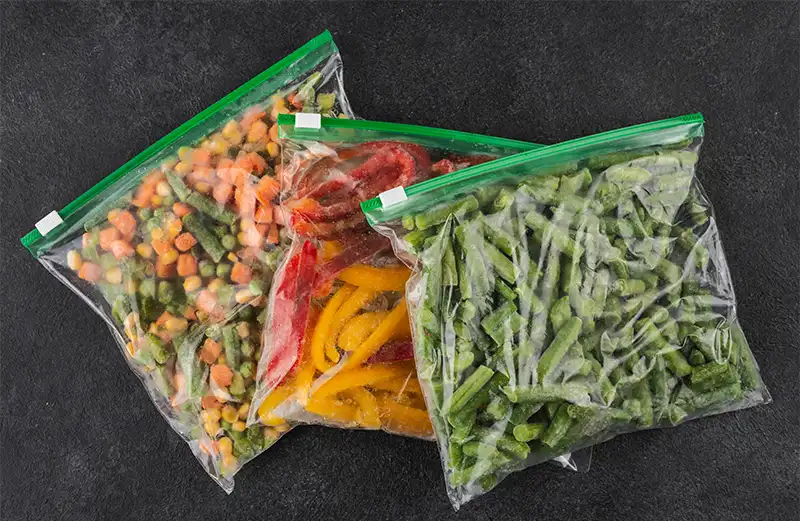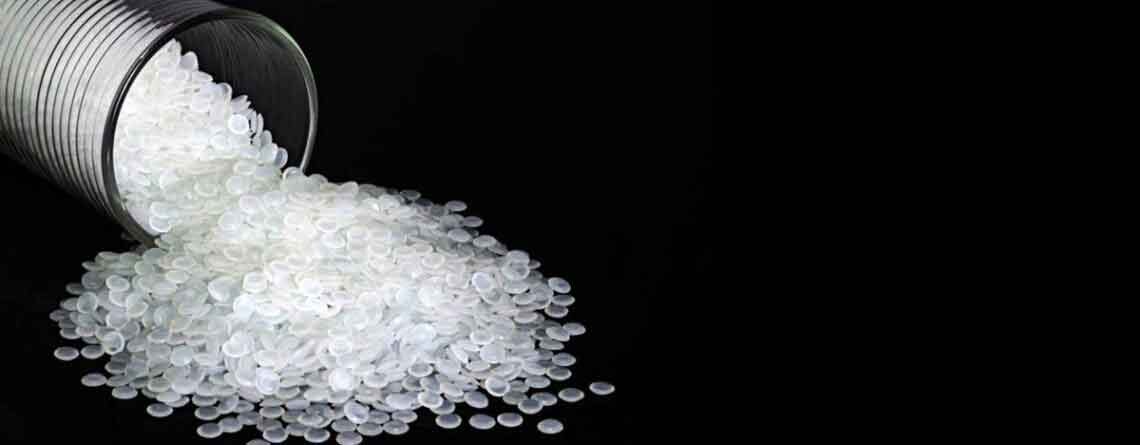Properties of Iran Low density polyethylene (LDPE)
Under the polyethylene class of materials, Low density polyethylene (LDPE) has shaped the packaging and manufacturing industry’s landscape, Being the oldest and most mature of the polyethylene’s.
LDPE was first produced in 1933 by Imperial Chemical Industries (ICI) using a high-pressure process via free radical polymerization. Its manufacturers employ the same method today.
It is a highly branched polyethylene, having various amounts of short and long branches, giving it a density range of 917-930 kg/m3.
Although it does not have the other polyethylene’s strength, LDPE has good clarity and processability due to its short and long chain branches. It is also more flexible than other polyethylene’s.
Other advantages of LDPE are listed below:
- Impact resistant from -40 C to 90 C
- Moisture resistance
- Good chemical resistance
- Good electrical insulation
- Easy to process and mould
- Food grades available
- Readily processed by all thermoplastic methods
The good chemical resistance of LDPE makes it immune to:
- Dilute Acid
- Dilute Alkalis
- Some Oils and Greases
- Alcohols
It also has some low chemical resistance to Aliphatic Hydrocarbons, Aromatic Hydrocarbons, and Halogenated Hydrocarbons.
However, there are some disadvantages to using LDPE. Some of them are:
- High thermal expansion
- Poor weathering resistance
- Subject to stress cracking
- Difficult to bond
- Flammable
- Poor temperature capability
- High permeability to gases like carbon dioxide and others
- Very low UV resistance
Iranian manufacturers produce LDPE granules. If the LDPE required by the customer needs to be in the form of powder, Iranian manufacturers can also oblige. During LDPE granulation, different kinds and amounts of additives, such as anti-block agents, antioxidants, and UV stabilizers, are usually added to the various grades produced.
Iran LDPE manufacturers are proud to announce that they produce their various grades according to global standards, and their properties can compete with or even beat their foreign competition.
Iranian manufacturers produce various grades with varying properties of LDPE, each suitable for application in a particular field. Some of the most well-known grades include:
- Film
- Injection molding
- Roto molding
- Blow molding

Application of LDPE
LDPE is used primarily in film applications. These films are used for both packaging and non-packaging applications and can be in the form of shrink-wrap and stretch films. Other applications include extrusion coatings, sheathing in cables, and injection moulding applications. In these applications, the products produced are:
plastic bags, wraps, and packaging
- Trays and general-purpose containers like bottles
- Very soft and pliable parts such as Snap-On lids
- Corrosion protection layer for work surfaces
- Computer hardware covers and packaging
- Features that need to be weldable and machinable
- Parts that require flexibility, such as wires and cables
- consumer goods such as housewares, flexible toys, and agricultural films
LDPE is considered a recyclable material, and recycled LDPE can be used to produce many different items such as shipping envelopes, garbage can liners, floor tile, panelling, furniture, compost bins, trashcans, landscape timber, and outdoor lumber.
LDPE is used primarily in film applications. These films are used for both packaging and non-packaging applications and can be in the form of shrink-wrap and stretch films. Other applications include extrusion coatings, sheathing in cables, and injection moulding applications. In these applications, the products produced are:
plastic bags, wraps, and packaging
- Trays and general-purpose containers like bottles
- Very soft and pliable parts such as Snap-On lids
- Corrosion protection layer for work surfaces
- Computer hardware covers and packaging
- Features that need to be weldable and machinable
- Parts that require flexibility, such as wires and cables
- consumer goods such as housewares, flexible toys, and agricultural films
LDPE is considered a recyclable material, and recycled LDPE can be used to produce many different items such as shipping envelopes, garbage can liners, floor tile, paneling, furniture, compost bins, trashcans, landscape timber, and outdoor lumber.
It is well known that the price of crude oil and natural gas are two of the main determining factors of the cost of polymeric material. Also, in Asian economies, a direct relationship between the price of crude oil and natural gas exists, further influencing the price of polymeric material. As the demand for crude oil and natural gas increases and the supply shortens, the cost of polymeric material increases and a decrease in the price happens when supply is high and demand is low.
The four largest oil reserve owners of the world are Iran, with 21.7 thousand million tonnes (9.3 % share of total), Venezuela (with 17.5 % share of total), Saudi Arabi (15.7 % share of total), and Canada (10.2 % share of total). Iran’s share of the world’s total oil production is only 4.0 %.
On the other hand, with 34.0 trillion cubic meters (18.2 % share of total) of natural gas, Iran has the world’s second-largest natural gas reserves in the world. These extensive oil and gas resources have made Iran one of OPEC’s leading members (Organization of Petroleum Exporting Countries) and the Organization of Gas Exporting Countries (GECF).
The Oil Ministry’s news portal has reported that $14.5 billion has been generated from oil and gas sales, with 23 million tons exported to international markets, generating $9.5 billion in revenue.
Observing the price trends indicates that crude oil prices have had a decrease in recent years, causing a reduction in the price of polymeric material, including various grades of Iran LDPE.
However, a slow and steady increase in the price of crude oil and the demand for HDPE has been happening, causing Iran LDPE’s price to increase. Constant monitoring of its market and expenses in order to avoid any negative impacts on the business is of crucial importance.

Iran LDPE price: what affects it?
The market of Iran
There are currently 17 polyolefin manufacturing units spread across Iran, providing various LDPE grades. These grades have all been produced with properties according to international standards, and their prices are moderate compared to other countries’ products. According to trade statistics of 107 countries in the year 2017, the U.N.’s International trade statistics have reported that Iran, with 6.57% of the worldwide LDPE export (1.54% of Iran’s total exports), is the fourth largest global LDPE supplier. During this period, Iran has provided LDPE for 61 countries across the globe. LDPE accounts for 57-58% of the combined LDPE-LLDPE market. These statistical data confirm Iran as a very desirable LDPE supplier in the global market.
Even though oscillating crude oil prices are anticipated to be a significant downside to the global market’s growth, the global LDPE market is expected to show considerable growth during the forecast period. The growing demand for flexible packaging from various end-user industries is set to drive growth throughout the 2016-2024 period with a CAGR of over 4% per year. Increasing demand for LDPE in the pharmaceutical industry is likely to act as an opportunity for the market studied. However, the demand for a substitute, such as LLDPE and HDPE, is expected to hinder the market studied.
Romak Trading Company: a promising name in the Iran LDPE market
Romak Trading Company does the utmost to provide the best Iran LDPE grades with the most judicious prices for dear customers worldwide, such as LDPE 2420 K, LDPE 2420 H, LDPE 2420 F and LDPE 2420 D. Our close connection with top quality Iran LDPE suppliers, manufacturers, and petrochemical companies have rendered us one of the embossed trading companies supporting the Iran LDPE market. We can provide any considerable quantity of various grades in any desired form and packaging. ACCORDING TO THE CUSTOMER’S REQUIREMENTS, Iran LDPE grades can be provided in the form of granules or powder, and the packaging of them can be in 25 Kg bags or 500-2500 Kg jumbo bags.



Leave a Reply
You must be logged in to post a comment.